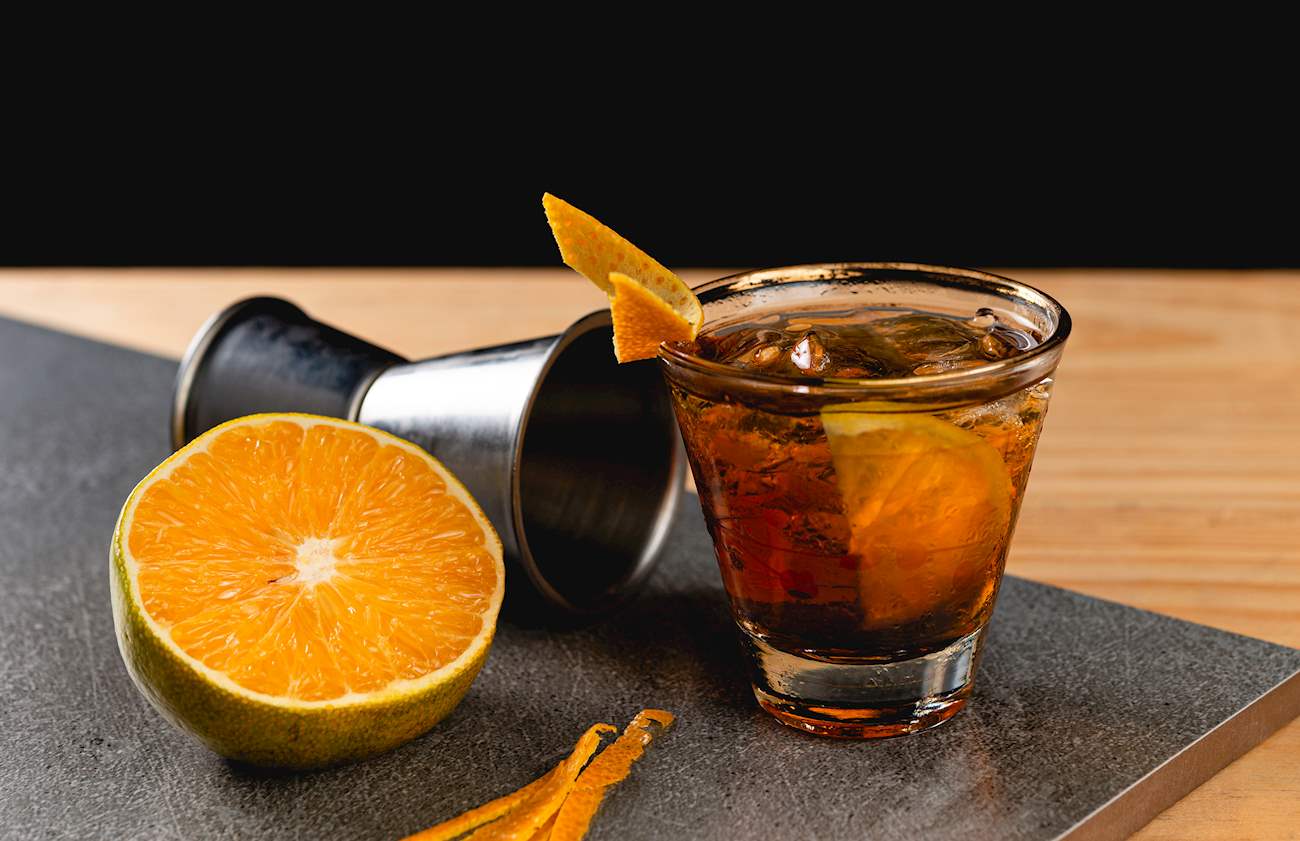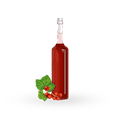MAIN INGREDIENTS
Bombeirinho is a Brazilian cocktail that is usually taken as a shot. In its basic form, the drink combines cachaça (Brazilian sugarcane spirit) and redcurrant syrup. To make the drink, a shot of cachaça is topped with a splash of syrup.
Another popular variation consists of cachaça, redcurrant syrup, lime juice, and lemon juice. To prepare it, the ingredients are shaken or mixed with ice, and the combination is then strained into an ice-filled glass. Bombeirinho translates as fireman.
Sakerinha is a variation of the famous Brazilian cocktail, the Caipirinha, but instead of using the traditional cachaça (a Brazilian spirit made from sugarcane), it uses sake (Japanese rice wine). The basic ingredients of a Sakerinha are sake, lime and sugar.
To make a Sakerinha, lime wedges and sugar are muddled together in a glass. Then, ice and sake are added, and the mixture is stirred well. The drink can be garnished with a slice of lime or other fruits for added flavor and presentation.
MAIN INGREDIENTS
Rabo-de-Galo is a popular Brazilian cocktail made with a combination of cachaça and either sweet vermouth or Cynar (a bitter liqueur), or both sweet vermouth and Cynar, depending on the recipe. In order to prepare it, the ingredients are stirred with ice, then strained into a cocktail glass which can be garnished with an orange peel, if desired.
When translated, the name of this drink means rooster’s tail, or simply - cocktail. Nowadays, Rabo-de-Galo is being rescued by Brazilian bartenders who are lobbying to include it on the IBA (International Bartenders Association) list of cocktails.
Quentão is a traditional cocktail made with fresh ginger, red apples, sugar, cloves, cinnamon, water, and cachaça. To prepare it, ginger, apples, and sugar are first caramelized, then combined with cloves and cinnamon. Cachaça and water are then added to the combination and the whole thing is boiled slowly, and much of the alcohol evaporates during this process.
The cocktail is then typically served in earthenware or ceramic mugs which are garnished with orange or lemon slices or peel. Quentão is especially popular in the south of Brazil during winter and during celebrations such as Festas Juninas.
In the far south of Brazil, cachaça is often replaced with red wine, and the result is a beverage similar to mulled wine.
MAIN INGREDIENTS
Caju Amigo (lit. Friendly Cashew) is a Brazilian shooter made with a combination of cachaça and cashew juice. In order to prepare it, both ingredients are simply mixed in a shot glass without ice. Cachaça is often served with a cashew slice on the side, which should be chewed without swallowing, followed by a shot of cachaça so that the spirit and the cashew slice are swallowed at the same time.
Caipiroska is a cocktail that is quite similar to Caipirinha, but consists of lime, brown sugar, and vodka instead of Brazilian cachaça. This refreshing, citrusy cocktail is a trendy beverage in Brazil, Argentina, Uruguay, and Paraguay, where it is often referred to as Caipivodka or Caipirodka.
Both Caipirinha and Caipiroska share the same preparation process: lime wedges and sugar are muddled together before alcohol (in this case, vodka) is added to the combination. A traditional way to serve Caipiroska is in an old-fashioned or highball glass filled with ice and with a lime wedge garnish.
TasteAtlas food rankings are based on the ratings of the TasteAtlas audience, with a series of mechanisms that recognize real users and that ignore bot, nationalist or local patriotic ratings, and give additional value to the ratings of users that the system recognizes as knowledgeable. TasteAtlas Rankings should not be seen as the final global conclusion about food. Their purpose is to promote excellent local foods, instill pride in traditional dishes, and arouse curiosity about dishes you haven’t tried.




